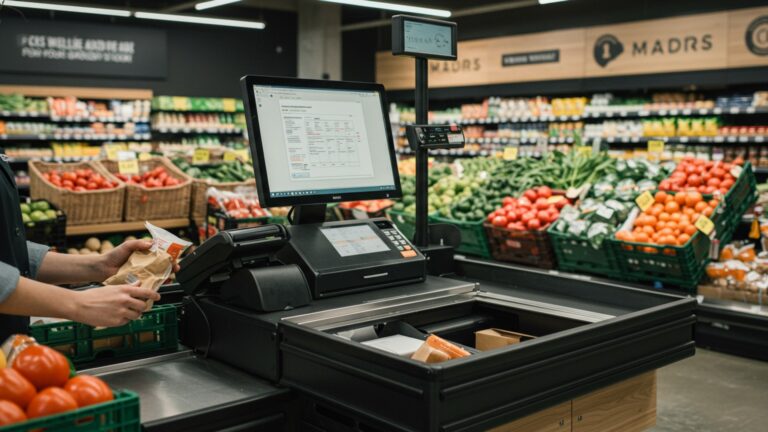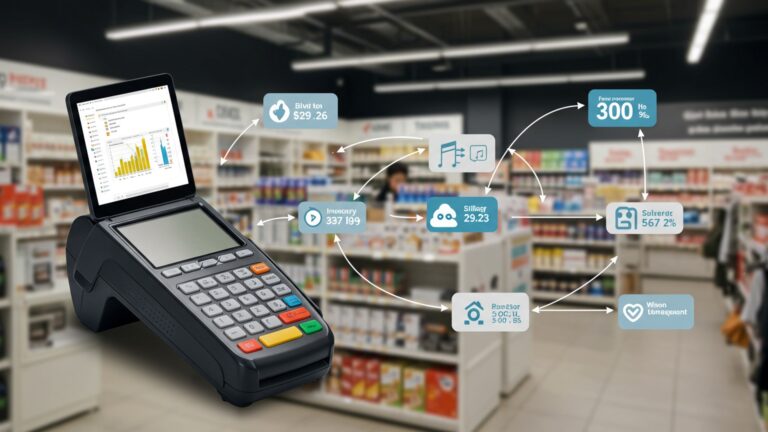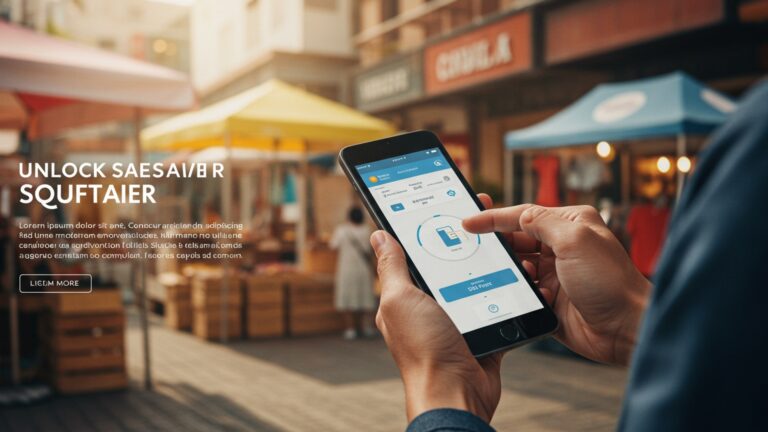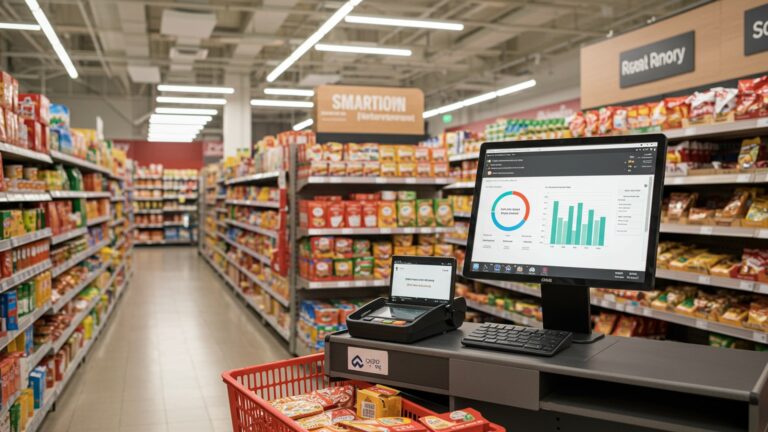How to Set Up Cloud Based POS Software for Business Growth
In today’s hyper-connected retail and service sectors, operational agility and data-driven insights are no longer luxuries but essentials for survival and growth. Modern businesses, from bustling coffee shops to expanding e-commerce operations, are rapidly adopting sophisticated cloud based POS software to transcend the limitations of traditional systems. This powerful technology moves beyond simple transaction processing, offering real-time inventory synchronization across multiple channels, robust customer loyalty program management. invaluable sales analytics accessible from anywhere. With recent trends emphasizing seamless omnichannel experiences and contactless payments, a properly configured cloud POS system becomes the central nervous system for optimizing workflows, reducing manual errors. ultimately fostering a scalable, resilient business model.

Understanding Cloud-Based POS Software: A Foundation for Modern Business
In today’s fast-paced business landscape, efficiency and adaptability are paramount. For many retailers, restaurants. service providers, the Point of Sale (POS) system is the heart of their operations. Traditionally, POS systems were on-premise, requiring dedicated hardware and local software installations. But, the advent of cloud computing has revolutionized this crucial business tool, giving rise to cloud based pos software.
So, what exactly does “cloud-based” mean in the context of a POS system? Simply put, it means your POS software and data are hosted on remote servers, accessible via the internet rather than residing solely on your local computers. This model, often referred to as Software-as-a-Service (SaaS), offers unparalleled flexibility. Instead of purchasing and maintaining expensive software licenses and hardware, businesses subscribe to a service, paying a recurring fee for access to the software and its features.
The core components and technologies involved include:
- Internet Connectivity: A stable internet connection is fundamental, as all data processing and storage occur remotely.
- Centralized Servers: Data is stored securely on the provider’s servers, often distributed across multiple data centers for redundancy and reliability.
- Web-Based Interface: Users access the system through a web browser or dedicated app on various devices (tablets, smartphones, traditional PCs).
- API (Application Programming Interface): These allow the cloud based pos software to integrate seamlessly with other business tools like e-commerce platforms, accounting software. CRM systems.
The advantages over traditional, legacy POS systems are significant:
- Accessibility: Manage your business from anywhere, anytime, using any internet-connected device.
- Cost-Effectiveness: Lower upfront costs, reduced maintenance expenses. often a subscription model that scales with your business.
- Automatic Updates: Software updates and new features are deployed automatically by the provider, ensuring you always have the latest version without manual effort.
- Data Security & Backup: Providers invest heavily in data security and offer automatic backups, protecting your critical sales and customer insights.
- Scalability: Easily add new terminals, locations, or features as your business grows without major infrastructure overhaul.
For businesses aiming for sustained growth, adopting cloud based pos software is not just an upgrade; it’s a strategic move that empowers better decision-making, streamlines operations. enhances customer experience.
Choosing the Right Cloud-Based POS Software for Your Business
With a multitude of cloud based pos software options available, selecting the right one can feel daunting. The key is to align the software’s capabilities with your specific business needs and growth aspirations. This involves a thorough evaluation of features, industry suitability, budget. vendor support.
Here are critical features to prioritize:
- Inventory Management: Robust tools for tracking stock levels, managing variants, receiving new inventory. conducting audits. This is crucial for preventing stockouts and overstocking.
- Sales Reporting & Analytics: Comprehensive reports on sales trends, popular products, staff performance. peak hours. Actionable insights are vital for strategic planning.
- Customer Relationship Management (CRM): Features to capture customer data, track purchase history, manage loyalty programs. facilitate targeted marketing efforts.
- Payment Processing: Seamless integration with various payment gateways (credit/debit cards, mobile payments, gift cards) and support for different payment terminals.
- Employee Management: Tools for managing staff schedules, tracking hours, assigning roles. setting permission levels.
- Multi-Location Management: If you have or plan to have multiple stores, the ability to manage all locations from a central dashboard is indispensable.
- Integrations: Compatibility with other essential business software, such as accounting platforms (e. g. , Xero, QuickBooks), e-commerce platforms (e. g. , Shopify, WooCommerce). marketing tools.
- Offline Mode: The ability to continue processing sales even if your internet connection temporarily drops, with data syncing once connectivity is restored.
Consider your industry-specific needs:
- Retail: Look for strong inventory control, variant management, customer loyalty programs. e-commerce integration.
- Restaurants/Cafes: Prioritize table management, kitchen display systems (KDS), order customization, ingredient tracking. online ordering capabilities.
- Service Businesses (Salons, Spas): Appointment scheduling, client management. service package options are key.
Budget and pricing models vary significantly. Most cloud based pos software providers offer tiered pricing based on features, number of terminals, or sales volume. Always clarify what’s included in each tier and watch out for hidden fees. Vendor reputation and support are also paramount; look for providers with responsive customer service, extensive knowledge bases. positive user reviews.
To illustrate the comparison aspect, consider a hypothetical scenario comparing two common types of POS solutions:
| Feature Category | Basic Retail Cloud POS | Advanced Restaurant Cloud POS |
|---|---|---|
| Target Business | Small Boutiques, Pop-up Shops | Full-Service Restaurants, Cafes |
| Core Inventory | SKU tracking, basic variants | Ingredient level tracking, recipe management |
| Payment Processing | Standard card terminals, mobile payments | Integrated payment terminals, split bills, tips |
| Reporting | Basic sales, product performance | Detailed sales by item, staff, table, waste reports |
| Specialized Features | Customer loyalty, e-commerce sync | Table mapping, KDS, online ordering, reservations |
| Pricing Model | Lower monthly fee, per-transaction fee | Higher monthly fee, feature-rich tiers |
Essential Hardware for Your Cloud POS System
While cloud based pos software minimizes the need for heavy local infrastructure, certain hardware components are still essential to facilitate transactions and streamline operations. The beauty of cloud POS is its compatibility with a wide range of off-the-shelf hardware, offering flexibility and often cost savings compared to proprietary systems.
Here’s a breakdown of the necessary hardware:
- POS Terminal (Tablet, PC, or Smartphone): This is the interface where your staff will interact with the software.
- Tablets (e. g. , iPads, Android tablets): Popular for their portability, sleek design. user-friendliness. Ideal for smaller spaces or mobile businesses.
- Desktop PCs/Laptops: Offer more power and screen real estate, suitable for high-volume environments or back-office management.
- Smartphones: Can serve as a basic mobile POS for very small operations or pop-up events, though less ideal for full-scale daily use.
- Receipt Printer: Critical for providing customers with transaction records.
- Thermal Printers: Most common, fast, quiet. use heat-sensitive paper (no ink needed). Connect via USB, Ethernet, or Bluetooth.
- Impact Printers: Slower and noisier but use ink ribbons and plain paper, useful for kitchen orders in hot environments where thermal paper might degrade.
- Barcode Scanner: Speeds up checkout by quickly adding items to the cart.
- 1D Scanners: For standard linear barcodes.
- 2D Scanners: Can read QR codes and other matrix barcodes, often found on mobile coupons or gift cards.
- Wired vs. Wireless: Wireless (Bluetooth) offers more flexibility.
- Cash Drawer: A secure place to store cash payments. Most modern cash drawers connect directly to the receipt printer, opening automatically after a cash sale.
- Payment Terminal (Card Reader): Processes credit and debit card payments.
- Integrated Terminals: Connect directly to your POS system, automatically sending transaction amounts and receiving approval/denial. This is the most efficient and error-reducing method.
- Standalone Terminals: Operate independently; staff manually enter amounts from the POS into the terminal. Less efficient but can be a backup.
- EMV, NFC, Magstripe: Ensure your terminal supports EMV (chip cards), NFC (contactless payments like Apple Pay). traditional magstripe.
Connectivity is key for a seamless cloud POS experience:
- Reliable Internet Connection: A strong, stable internet connection (broadband, fiber, or robust 4G/5G) is non-negotiable. Consider a backup internet option (e. g. , a mobile hotspot) for emergencies.
- Network Configuration: A well-configured local network (Wi-Fi or Ethernet) is essential for your hardware to communicate effectively with each other and the cloud. Ethernet offers more stability than Wi-Fi for stationary devices.
Before purchasing, always verify hardware compatibility with your chosen cloud based pos software provider. Most providers maintain a list of supported devices. using unsupported hardware can lead to frustrating compatibility issues.
The Step-by-Step Setup Process for Cloud POS
Implementing cloud based pos software might seem complex. by breaking it down into manageable steps, the process becomes straightforward and highly actionable. This methodical approach ensures a smooth transition and maximizes the benefits for your business growth.
Step 1: Account Creation and Initial Configuration
The journey begins by signing up for your chosen cloud based pos software. This typically involves:
- Creating an Account: Provide basic business insights, contact details. set up your administrator login.
- Company Profile Setup: Enter essential business details such as your business name, address, contact data, currency. time zone. This details will often appear on receipts and reports.
- Tax Settings: Configure your local sales tax rates. Many systems allow for multiple tax rates or tax-exempt categories, which is crucial for compliance.
// Example of initial configuration parameters (conceptual) { "companyName": "My Awesome Business", "address": "123 Main Street, Anytown, USA", "currency": "USD", "timeZone": "America/New_York", "taxRates": [ {"name": "State Sales Tax", "rate": 0. 06}, {"name": "Local Tax", "rate": 0. 01} ] }
Step 2: Product and Inventory Management
This is often the most time-consuming but critical step. Accurate product data is the backbone of your POS system.
- Importing Products: If you have an existing product catalog (e. g. , from a spreadsheet or previous system), most cloud POS solutions offer bulk import functionalities via CSV files. Organize your data (SKU, name, price, cost, description, category, variants, stock levels) carefully before importing.
- Creating New Products: For new items or those not in your existing data, manually add them, ensuring all relevant details are captured.
- Managing Variants: For products with multiple options (e. g. , a t-shirt in different sizes and colors), set up product variants to track each specific item accurately.
- Setting Stock Levels: Input initial stock quantities for all products. Define reorder points to trigger alerts when inventory is low.
Step 3: Staff Management and Permissions
Empower your team while maintaining control.
- Adding Users: Create individual user accounts for each staff member who will use the POS.
- Assigning Roles and Permissions: Define roles (e. g. , Manager, Sales Associate, Stock Clerk) and assign specific permissions to each role. This ensures employees only have access to the functions necessary for their job, enhancing security and preventing errors. For example, a sales associate might not have access to sensitive reports or inventory cost prices.
Step 4: Payment Processing Integration
Connect your POS to handle transactions.
- Choose a Payment Gateway: Most cloud based pos software integrates with popular payment processors (e. g. , Stripe, Square, PayPal, Adyen). Select one that offers competitive rates and supports your desired payment methods.
- Configure Settings: Link your payment gateway account with your POS software, entering API keys or following the provider’s specific connection steps.
- Set Up Payment Methods: Define all accepted payment methods (cash, credit/debit, gift cards, mobile payments).
Step 5: Hardware Integration
Get your physical devices talking to your software.
- Connect Peripherals:
- Receipt Printer: Connect via USB, Ethernet (network), or Bluetooth. Follow the POS software’s instructions to add and test the printer. Often, this involves installing a small driver or selecting the printer from a list in the software settings.
- Barcode Scanner: Typically connects via USB or Bluetooth. Test by scanning a product.
- Cash Drawer: Usually connects to the receipt printer and opens automatically when the printer receives a command for a cash sale.
- Payment Terminal: Pair your card reader with the POS system, often wirelessly via Bluetooth or directly via USB/Ethernet depending on the model.
- Test All Devices: Perform test transactions to ensure all hardware components are communicating correctly with the cloud based pos software and functioning as expected.
Step 6: Data Migration (If Applicable)
If you’re transitioning from an older system, migrating existing data is crucial.
- Customer Data: Import existing customer databases to maintain loyalty programs and purchase histories.
- Sales History: While often complex, importing historical sales data can provide valuable insights for future analysis. Consult your new POS provider for best practices on migrating this type of data.
Step 7: Customization and Settings
Tailor the system to your brand and specific operational needs.
- Receipt Templates: Customize your receipts with your business logo, contact details, return policies. promotional messages.
- Discounts and Promotions: Set up various discount types (percentage, fixed amount, buy-one-get-one-free) and promotion rules.
- Loyalty Programs: Configure your customer loyalty scheme, if applicable, to reward repeat customers.
- Reporting Preferences: Customize which reports are most crucial to you and set up automated report delivery if available.
By diligently following these steps, your business will be well-equipped to leverage the power of cloud based pos software for enhanced efficiency and growth.
Training Your Team for Success with Cloud POS
The most sophisticated cloud based pos software is only as effective as the team using it. Comprehensive training is not merely a formality; it’s an investment in your employees’ confidence, operational efficiency. ultimately, your business’s success. A well-trained team can minimize errors, speed up transactions. provide superior customer service.
Here are key areas to cover during training:
- Basic Transaction Processing: This is the foundation. Train staff on how to:
- Ring up sales (scanning items, manual entry).
- Apply discounts and promotions.
- Process various payment types (cash, credit/debit, gift cards, mobile payments).
- Handle voids and item removals.
- Returns and Exchanges: A crucial part of customer service. Ensure staff know the exact steps for processing returns, issuing refunds or store credit. handling exchanges according to your store policy. This can often be a point of friction if not handled smoothly.
- Inventory Checks and Adjustments: Depending on their role, staff might need to:
- Check stock levels for customers.
- Perform basic inventory counts.
- Process received inventory or transfer items between locations.
- Opening and Closing Procedures: Train on daily routines like opening the cash drawer, reconciling cash at the end of a shift. generating end-of-day reports.
- Customer Management (CRM): If your cloud based pos software includes CRM features, train staff on:
- Adding new customer profiles.
- Looking up existing customers.
- Applying loyalty points or special discounts.
- Capturing customer preferences.
- Troubleshooting Basics: Equip staff with basic troubleshooting steps for common issues, such as a printer not working or a payment terminal losing connection. Knowing when to escalate an issue to a manager can save valuable time.
To make training effective:
- Hands-On Practice: Provide a dedicated training mode or a sandbox environment where employees can practice transactions without affecting live data.
- Create User Guides: Develop clear, concise, step-by-step user guides or quick reference sheets for common tasks. These can be invaluable for new hires or as refreshers.
- Designate Super Users: Identify a few tech-savvy employees who can become “super users” or internal experts. They can assist peers and act as a first line of support.
- Regular Refreshers: Conduct periodic refresher training sessions, especially when new features are rolled out or business processes change.
A personal anecdote: A small bakery I consulted for initially skimped on POS training. Their staff, overwhelmed by the new cloud based pos software, struggled with complex orders and often made errors with loyalty points. After a dedicated training week, including role-playing and a detailed manual, their transaction times dropped by 20%. customer satisfaction scores related to checkout accuracy significantly improved. This highlights that proper training isn’t an expense. an essential investment.
Leveraging Cloud POS for Business Growth
The true power of cloud based pos software extends far beyond simply processing sales. Its inherent capabilities, when fully utilized, can become a catalyst for substantial business growth by providing actionable insights, enhancing customer relationships. streamlining operations across multiple locations.
- Advanced Reporting and Analytics:
One of the most significant advantages of cloud POS is its ability to centralize and review vast amounts of data. Instead of basic sales totals, you gain access to:
- Sales Trends: Identify peak selling times, days. seasons. This allows for optimized staffing, inventory ordering. marketing campaign timing.
- Product Performance: Pinpoint your best-selling items, slow-moving stock. products with the highest profit margins. Use this data to refine your product offerings and merchandising strategies.
- Customer Behavior: interpret what specific customer segments are buying, how often. at what price points.
- Employee Performance: Track individual sales metrics, identifying top performers and areas where additional training might be needed.
Imagine a scenario where a boutique owner, using their cloud based pos software, notices that “eco-friendly” products consistently sell out on weekends. This insight allows them to increase stock of these items, run weekend promotions specifically for them. even rearrange store displays to highlight them more prominently, directly boosting sales.
- Customer Relationship Management (CRM) Capabilities:
Many cloud POS solutions come with integrated CRM features or seamlessly integrate with dedicated CRM platforms. This allows you to:
- Build Customer Profiles: Capture names, contact info, purchase history. preferences.
- Personalize Marketing: Send targeted promotions based on past purchases or expressed interests. For instance, a customer who frequently buys coffee beans might receive a discount on a new blend.
- Implement Loyalty Programs: Reward repeat customers, encouraging continued engagement and fostering brand loyalty.
A coffee shop using cloud POS tracks customer preferences. When a regular customer walks in, the barista can greet them by name and even suggest their usual order or a new specialty drink based on their past choices, creating a highly personalized and memorable experience.
- Multi-Location Management:
For businesses with multiple branches, cloud based pos software is a game-changer. You can:
- Centralized Control: Manage inventory, pricing, staff. promotions across all locations from a single dashboard.
- Unified Reporting: Get a holistic view of your entire business performance, comparing sales data between different stores to identify best practices and areas for improvement.
- Streamlined Operations: Transfer inventory between stores, manage employee schedules centrally. ensure consistent customer experience regardless of location.
Consider a chain of five small eateries. Before cloud POS, managing inventory and sales across all locations was a nightmare of spreadsheets and phone calls. With cloud based pos software, the owner can view real-time sales for all locations simultaneously, identify which items are selling best at which branch. optimize ingredient orders and staff deployment accordingly, leading to less waste and higher profits.
- E-commerce Integration:
Bridging the gap between your physical and online stores is crucial in modern retail. Cloud POS often integrates directly with popular e-commerce platforms, enabling:
- Synchronized Inventory: Stock levels are automatically updated across both your brick-and-mortar and online stores, preventing overselling.
- Unified Customer Data: Maintain a single customer database, regardless of where they shop, for consistent marketing and loyalty programs.
- Omnichannel Experience: Offer customers options like “buy online, pick up in store” (BOPIS) or “return in store” for online purchases, enhancing convenience and satisfaction.
By actively engaging with the rich features of your cloud based pos software, businesses can move beyond mere transaction processing to strategic growth, informed decision-making. superior customer engagement.
Best Practices and Troubleshooting Tips for Your Cloud POS System
Once your cloud based pos software is up and running, adopting best practices and knowing how to troubleshoot common issues will ensure its smooth, continuous operation and maximize its value to your business. Proactive maintenance and a clear understanding of potential pitfalls can save significant time and prevent operational disruptions.
Best Practices for Optimal Performance:
- Regular Data Backups (Even for Cloud): While cloud based pos software providers handle server-side backups, it’s a good practice to periodically export your own data (e. g. , product lists, customer databases) if the feature is available. This provides an extra layer of security and peace of mind.
- Robust Internet Connection and Backup: As the lifeline of your cloud POS, invest in a reliable, high-speed internet connection. Consider a secondary internet source (e. g. , a mobile hotspot, a separate ISP line) as a failover in case your primary connection goes down. Most cloud POS systems have an offline mode. a backup connection minimizes downtime.
- Maintain Hardware: Keep your POS terminals, printers. scanners clean and in good working order. Regularly check for loose cables and ensure receipt paper is stocked. Dust and debris can impact performance.
- Stay Updated with Software: Enable automatic updates for your POS software if available, or regularly check for and install updates. These often include new features, security patches. bug fixes that improve performance and security.
- Review Reports Regularly: Don’t just collect data; review it. Make it a routine to review sales reports, inventory reports. customer insights. This regular analysis is key to identifying trends, making informed decisions. driving growth.
- Secure Your System:
- Strong Passwords: Enforce strong, unique passwords for all staff accounts.
- Role-Based Permissions: Continuously review and adjust staff permissions to ensure employees only have access to necessary functions.
- Physical Security: Secure your POS hardware, especially tablets and cash drawers, to prevent theft.
- Consistent Training and Refreshers: As mentioned previously, continuous training ensures your team remains proficient and adapts to new features or changes in your cloud based pos software.
Common Issues and Troubleshooting Tips:
- “Internet Connection Lost” / Offline Mode Activation:
- Check Internet Router: Restart your modem and router.
- Verify Wi-Fi/Ethernet Connection: Ensure your POS device is properly connected to the network.
- Test Other Devices: See if other devices can access the internet. If not, the issue is with your ISP.
- Utilize Offline Mode: If your POS has an offline mode, continue processing sales. Data will sync once connectivity is restored.
- Receipt Printer Not Printing:
- Check Power and Cables: Ensure the printer is powered on and all cables (power, USB/Ethernet) are securely connected.
- Paper Roll: Verify there’s enough paper and it’s loaded correctly.
- Printer Status: Check the printer’s status lights for error indicators.
- POS Software Settings: Confirm the correct printer is selected in your cloud based pos software settings and test a print from there.
- Driver/Network: For network printers, ensure the printer’s IP address is correct and accessible on your network. Reinstall drivers if necessary for USB printers.
- Barcode Scanner Not Working:
- Cable/Battery: Check that the scanner is properly connected (USB) or charged (wireless).
- Configuration: Some scanners require specific configuration codes to be scanned. Refer to the scanner’s manual.
- Test with Notepad: Open a text editor (like Notepad) and scan a barcode. If the numbers appear, the scanner is working. the issue might be with the POS software’s integration.
- Payment Terminal Connection Issues:
- Power and Network: Ensure the terminal is powered on and has an active internet connection (Wi-Fi or Ethernet).
- Pairing: If it’s a Bluetooth terminal, ensure it’s properly paired with your POS device. Unpair and re-pair if necessary.
- POS Integration: Verify the payment terminal is correctly selected and configured within your cloud based pos software settings.
- Contact Payment Processor: If all else fails, the issue might be on the payment processor’s end; contact their support.
- Software Glitches / Slow Performance:
- Clear Browser Cache: If using a web-based interface, clear your browser’s cache and cookies.
- Restart Device: A simple restart of your POS tablet or PC can often resolve temporary software hiccups.
- Update Browser/OS: Ensure your browser and operating system are up to date.
- Contact Support: If persistent, gather details (error messages, steps to reproduce) and contact your cloud based pos software provider’s support team.
By implementing these best practices and being prepared for common troubleshooting scenarios, you can ensure your cloud based pos software remains a powerful and reliable asset for your business growth.
Conclusion
Embracing cloud-based POS isn’t merely an upgrade; it’s a strategic pivot for sustainable growth. Don’t just install software; proactively leverage its capabilities for real-time inventory adjustments and insightful sales analytics. My personal tip: focus on integrating your POS with other platforms, like e-commerce, to create a truly seamless omnichannel experience – a critical trend in today’s retail landscape. I’ve seen businesses transform by moving from reactive problem-solving to proactive decision-making, utilizing AI-driven insights to predict customer demand and optimize staffing. This shift empowers you to manage multiple outlets effortlessly, a recent development that truly levels the playing field for smaller businesses. Imagine instantly knowing which products are flying off the shelves across all your locations, allowing for dynamic promotions. The future of retail demands agility and connectivity. By setting up your cloud POS thoughtfully, you’re not just processing transactions; you’re building a resilient, intelligent operation ready to scale and thrive in an ever-evolving market. Seize this opportunity to innovate and lead.
More Articles
How to Master POS Billing Software for Efficient Retail Operations
How to Choose the Best Mobile POS Software for Your Business
Learn How to Streamline Your Business With Billing and POS Software
10 Essential Multi Outlet Clothing POS System Features for Retail Success
Discover 5 Best POS Systems for Your India Restaurant Guide
FAQs
What exactly is cloud POS. how does it help a business like mine grow?
Cloud POS, or Point of Sale, means your sales software and all your business data live online, accessible from anywhere with an internet connection, not just on a single computer in your store. This helps growth by giving you real-time insights into sales, inventory. customer behavior, allowing for smarter decisions, faster expansion to new locations. seamless integration with online sales channels.
How do I even start setting up a cloud-based POS system for my business?
First, identify your core business needs – what features are absolutely essential for your operations? Then, research different providers that fit those needs and your budget. Once you’ve chosen one, you’ll typically sign up. they’ll guide you through the initial setup, which usually involves importing your products, customer lists. configuring payment methods. It’s often more straightforward than you might anticipate!
What kind of equipment do I need for a cloud POS setup? Can I use my existing stuff?
You typically need a device to run the software (like a tablet, smartphone, or computer), a reliable internet connection. optionally, peripherals like a barcode scanner, cash drawer. receipt printer. Many cloud POS systems are compatible with standard hardware, so you might be able to reuse some of your existing equipment, which can definitely help save costs.
Is my business and customer data actually secure in the cloud? I’m a bit worried about that.
Reputable cloud POS providers invest heavily in security measures. They use strong encryption, secure data centers. conduct regular backups to protect your details. Your data is often more secure with a dedicated cloud provider, who specializes in data protection, than it might be on a single, unprotected computer in your store. Always choose a provider with a strong security track record.
How does cloud POS help me manage inventory and sales across multiple locations or online?
That’s one of its biggest strengths! With cloud POS, all your inventory and sales data are centralized. When an item sells in one store or online, the inventory updates instantly across all channels. This prevents overselling, simplifies stock management. gives you a unified, real-time view of your entire business operations, no matter how many locations you have.
What features should I prioritize when picking a cloud POS system for future growth?
Look for scalability (can it grow with you?) , robust inventory management, detailed reporting and analytics, customer relationship management (CRM) tools. strong integration capabilities with other software like e-commerce platforms or accounting systems. User-friendliness and excellent customer support are also key factors to ensure a smooth operation as you expand.
What’s the learning curve like for my staff? Is it complicated to train them on new cloud POS software?
Most modern cloud POS systems are designed with ease of use in mind, featuring intuitive interfaces that mimic common apps. Training usually involves showing staff how to process sales, handle returns, manage basic inventory tasks. access customer details. Many providers offer helpful training materials, video tutorials. responsive customer support to help get your team up to speed quickly and efficiently.






